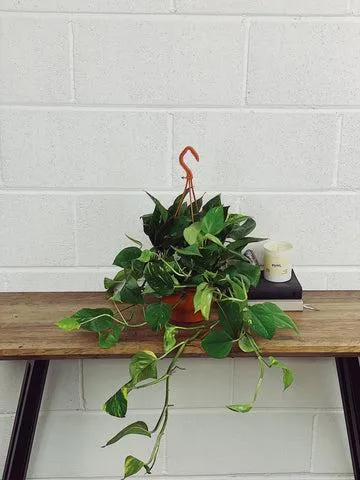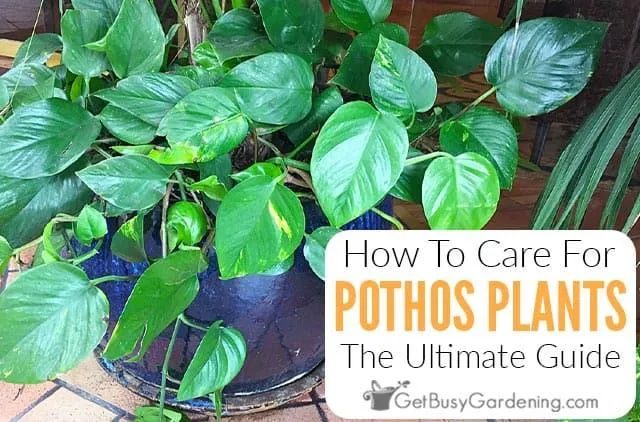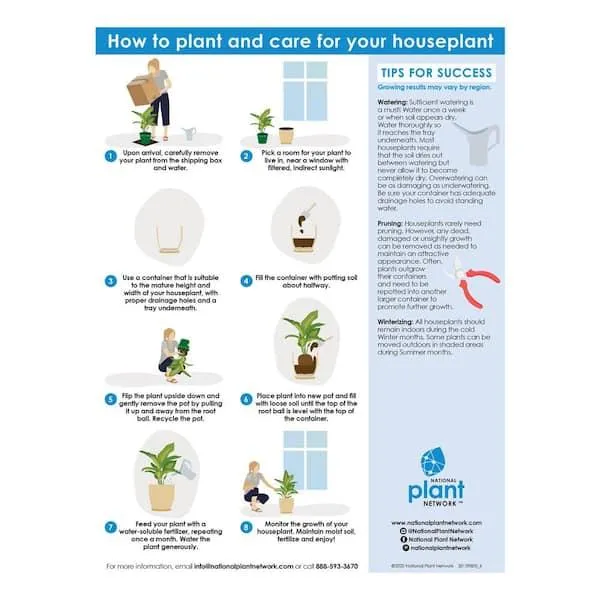The Ultimate Guide to Caring for Your Indoor Ivy
Whether you’re a total plant novice or a seasoned green thumb, ivy is one of the easiest houseplants to keep alive and thriving indoors. From my experience caring for all sorts of plants over the years, ivy is remarkably low-maintenance once you get the hang of it. Here are some tips to help your ivy flourish. But first, let’s cover the basics of what ivy needs.
Light Requirements
Ivy prefers bright, indirect light. Direct sun can scorch its leaves, so position it a few feet away from windows. However, it also needs enough light to photosynthesize, so avoid places with full shade. Basically, southern- or eastern-facing windows provide perfect lightning conditions. You’ll know it’s not getting sufficient light if leaves start looking pale or sparse. Ain’t no biggie – just move it closer to the window.
Watering
When it comes to moisture, ivy kinda likes to keep its feet wet, if you know what I’m saying. The soil should be kept consistently moist but not soaked. Kind of like how you want a perfectly ripe avocado – not mushy, but definitely not bone dry. Allow the top inch or two to dry out between waterings before giving it another drink. Overwatering can lead to root rot, so try to water just enough to moisten the entire pot. Does that help paint the picture?
Temperature
Ivy grows best in warm conditions between 60 to 80 degrees Fahrenheit. Temperatures below 50 degrees can damage leaves. So in the winter, move it away from drafty windows and heat vents. But don’t sweat the small stuff – ivy is remarkably resilient to minor temperature fluctuations. Amazingly, it can tolerate short periods down to freezing!
Humidity
Higher humidity levels around 50% are optimal for ivy to thrive. If your home’s air tends toward the dry side, use a pebble tray or humidifier near the plant. Alternatively, you can group ivy with other houseplants to raise the ambient humidity. Mist leaves occasionally on hot, dry days too. But low humidity alone won’t kill ivy – it just prefers moister conditions. Hey, don’t we all!

Soil
When repotting ivy, use a well-draining potting mix for houseplants. I like to add perlite or gravel to the bottom of the pot for extra drainage. Standard potting soil works great. You can also mix in some sand or compost to loosen heavy clay soils. Ensure the container has drainage holes to prevent roots from sitting in water. Repot yearly in spring when new growth emerges using a container just 1-2 inches larger.
Fertilizing
During the growing season from spring to fall, feed ivy every 4-6 weeks with a diluted liquid houseplant fertilizer. Follow label directions and use half the recommended strength. Too much fertilizer can scorch roots. In the winter when growth slows, cut back fertilizing to every 8-12 weeks. Thriving ivy will have dark green, glossy leaves – a sure sign it’s food is on point. But even if you forget, ivy is quite forgiving.
Pruning
Ivy requires minimal pruning to look its best. Simply trim off any non-green or leggy growth as needed with clean pruners. You can shape the plant or keep it bushy by pinching off new tip growth. Pruning stimulates branching for a fuller appearance. It’s kinda like getting a haircut – regular light trims make ivy healthier in the long run. Go easy and don’t shear it back too severely.
Pots and Hanging Baskets
Ivy thrives when trained vertically on trellises, poles or hanging from baskets. You can use plastic or wire mesh for support. Coil stems around the structure and anchor them with twist ties at first until roots take hold. Hanging baskets make awesome decor, especially trailing varieties like English ivy or variegated Swedish ivy. Just be sure the hanger and drainage holes allow excess water to empty. Reposition every few months so ivy grows evenly.
Pests and Disease
Indoor ivy is fairly pest-free, but occasionally grapples like scale, spider mites or mealybugs can infest. Check regularly for tiny insects or fuzzy patches on leaves and stems. Wipe with cotton balls dipped in rubbing alcohol, or spray with neem or insecticidal soap. Remove yellow or brown foliage and isolate sick plants to avoid spread. Too much fertilizer can cause crunchy browning leaf tips sometimes too. Overall though, ivy remains low maintenance.

Propagation
No joke, this plant kind of propagates itself! Lay stem cuttings on the soil and mist frequently until roots form in a few weeks. You can start new plants from stem or leaf cuttings plunked right into potting mix or water. It’s hilarious how easily ivy takes root and multiplies. Before you know it, you’ll have babies galore to share with friends or fill your home with more greenery, maybe? I’m always tripping over myself trying to contain my overgrown ivy, LOL!
Varieties to Consider
Some popular ivy choices for indoors include English ivy (Hedera helix) with its dark glossy leaves, Swedish ivy (Plectranthus verticillatus) with tubular purple flowers, and Neanthe Bella palm ivy (Epipremnum pinnatum) featuring heart shaped leaves. Variegated cultivars like ‘Gold Child’ add lovely contrast. Try some in hanging pots for stunning vertical interest. I’m partial totrailingspecimens myself.
Tips and Tricks
Hope these ivy care essentials help keep your plant thriving for years to come! A few extras that come to mind: check for insects right when bringing plants home to quarantine any hitchhikers. Repot bound roots in spring. Wipe down leaves sometimes with a damp cloth for a fresher look. Add pebbles, mulch or decorative mesh to pots to pretty them up, potentially? Most importantly though – relax and enjoy your ivy! Unless you majorly neglect it, this resilient plant basically takes care of itself.
Curious if you have any other ivy questions! Feel free to ask in the comments below. I’ll do my best to share more growing tips from personal experience. With a little TLC, your ivy will reward you with luscious leaves and memories to match for seasons to come. Here’s hoping this guide serves you well in cultivating your own leafy friend. Cheers and happy planting!
Indoor Ivy Care Tips
| Watering | Water when top inch of soil is dry. Water thoroughly until water drains from bottom of pot. Avoid getting leaves wet. |
|---|---|
| Light | Partial to bright indirect light. Keep away from direct sun or it may burn leaves. Leaf color is brighter in higher light. |
| Temperature | Above 50°F. Warmer temperatures make it grow faster but colder temperatures are okay as long as not freezing. |
| Humidity | Higher humidity levels around 50% help leaves stay green and prevent browning. Mist leaves occasionally or use pebble trays. |
| Pruning | Prune long or straggly vines to encourage bushier growth. Cut back about an inch from main stem. Can propagate cuttings in water. |
| Fertilizer | In spring and summer, use dilute liquid houseplant fertilizer every 2-4 weeks during active growth. |
FAQ
-
How much sunlight does indoor ivy need?
Ivy basically needs moderate indirect sunlight each day to stay healthy. It will grow in lower light areas but may not look as awesome. Direct southern or western sunlight for a few hours daily is the sweet spot.

-
What soil is best for indoor ivy?
Any good potting mix ought to do the trick. Make definitely certain it drains well though, since ivy dislikes soggy feet. You could possibly mix in some perlite or gravel to improve drainage if needed. Peat-based soils work well.
-
How often should ivy be watered?
Water ivy when the top inch or so of soil feels dry. Overwatering can be seriously bad. Basically, water till it drains out the drainage holes and let the soil partly dry out amongst waterings. In the wintertime, cut back on water slightly.
-
How do you fertilize indoor ivy?
Feed ivy with a diluted liquid fertilizer monthly during its growing season from spring to fall. Or use an all-purpose granular plant food according to label directions. Honestly, ivy grows so fast it won’t likely need fertilizer very often.
-
How do you prune indoor ivy?
Prune ivy to shape and control its size, or to remove dead or diseased growth. Cut stems back by about a third all throughout the year, except for while it’s setting flower buds in early spring. Wear gloves in case it brings back memories of nasty poison ivy from your childhood camping trips!
-
How do you propagate ivy cuttings?
Take four to six inch stem cuttings, strip off bottom leaves, and plant halfway in a moist potting mix. Place in humidity and indirect sun. Cuttings ought to root within a month. You can trade or gift rooted babies to friends and family and grow your collection!

-
What pests might indoor ivy encounter?
All plants run the risk of pests, but ivy seems fairly trouble-free thanks to its toxins. Ivy may possibly battle mealybugs or spider mites if under stress. Check weekly and isolation is wiser than pesticides inside. Overall your ivy appears fabulously pest-proof according to my research – you must have a green thumb!
At the same time, indoor ivy care seems simple considering its toughness. However, overwatering probably remains the number one cause of issues. Give it reasonable light, water, food, and prune occasionally. Yet always monitor it for any potential pests. With mindful care, your ivy should flourish endlessly – perhaps pass cuttings to friends and family when it gets huge! Let me know if you need any other tips.
